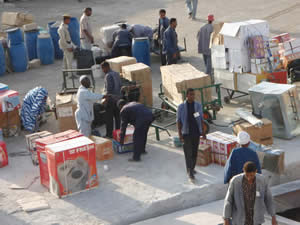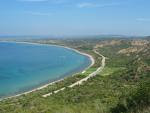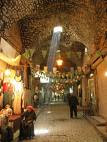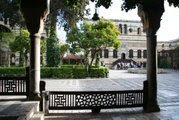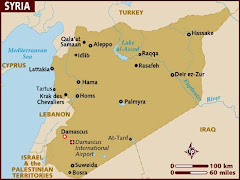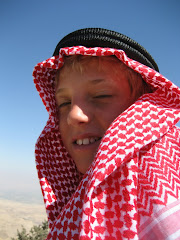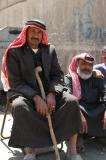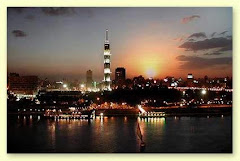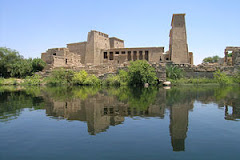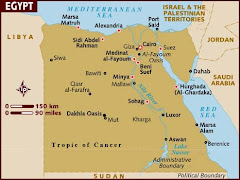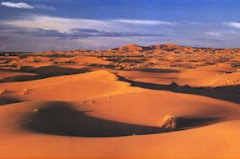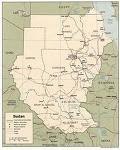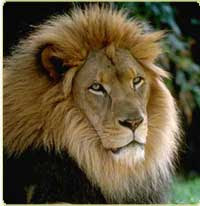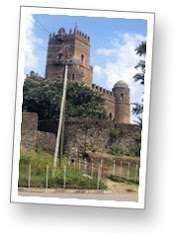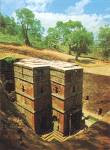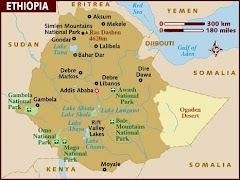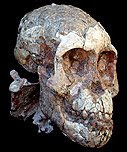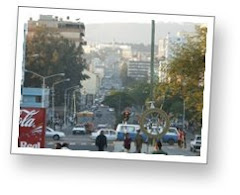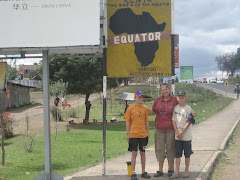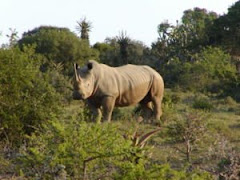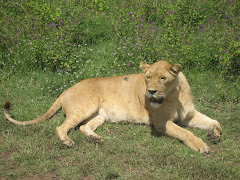
Wall decorations in a tomb in the Valley of the Queens
 Valley of the Kings
Valley of the KingsSo many things to do..... We started with the Karnak Temple. A huge temple that used to be connected to the Luxor temple in the middle of the town. Lots of tourists, but because it is so enormous you hardly notice them. Of course we are approached by guards to show us something special in exchange for some bakshees. They all want some extra money. We were allowed to sit on the feet of Ramses II. Then we went to the museum. The luxor museum is a gem. Everything well displaced. Very nice to walk around for some time. And the mummification museum, which was a bit scary with all the mummies lying there. They also mummified cats and crocs, imagine that. They explained how the process worked and some tools were shown. All the viscera, dad explained that they meant spleen, liver, bowels and so on were put in 4 special jars and the brains were removed with a kind of spoon. A bit spooky to see these very old mummies.
Of course we made use of the Egyptian Ferrari, much cheaper than in Aswan and we took a felluca, a sailing boat to see the sunset on the Nile.
But the nicest things were to see on the other side of the Nile. The Valley of the Kings. With a small train you were driven to the valley and there you could choose 3 tombs for one ticket. Of course was our first not much of interest but the guard told us which one to see. A lot of climbing. The only things you could see were the decorations and sometimes the sacrophage. All the other artifacts that were once in the tombs are in museums all over the world. But nevertheless a very hot and wonderful experience. On the west side we also saw some temples, the Collosi of Memnon, two huge statues and the Valley of the queens. There are more then 20 tombs you can visit in the Valley of the Kings, but there are only 3 tombs to be seen in the Valley of Queens. But they are the best. Beautiful drawings and still very colourful. And once back in the hotel a nice dip in the pool!


The big statues are guarding the valleys on the West side of the Nile









